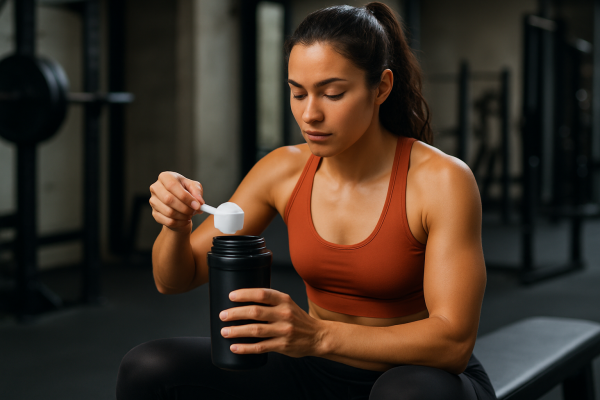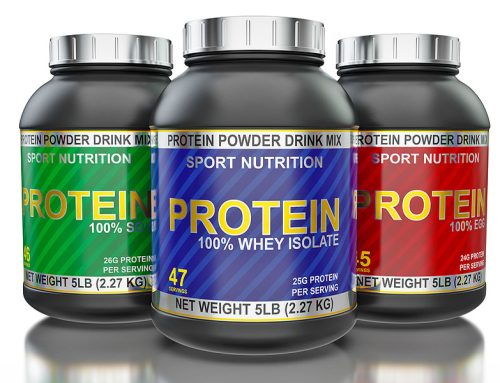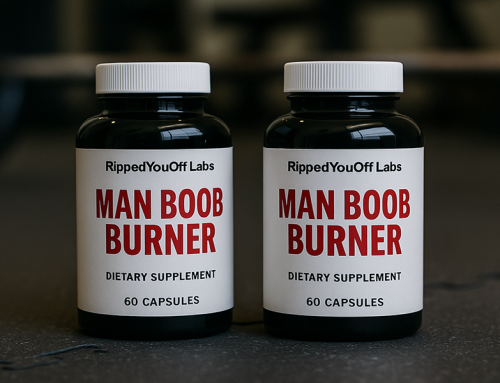Creatine has been around since the 1990s. It’s one of the most researched and tested supplements in history. For decades, it’s been a go-to for athletes and bodybuilders who wanted more strength and better performance in the gym and in sports. So why is creatine suddenly back in the spotlight in 2025?

Creatine sales are surging, enough that even business outlets like Business Insider and the Wall Street Journal have picked up the story.
At the same time, the topic of creatine benefits is blowing up across the fitness and health media space – podcasts, YouTube channels, Instagram, Threads – everywhere you look, people are talking about it again. There are three big reasons:
- More women are finally taking it.
- More older adults are jumping on board.
- The dosage debate has gone viral.
Let’s break it down.
1. Women And Creatine: Breaking Old Myths
For years, most creatine users were men. Women were hesitant. They worried about bloating, water retention, and “weight gain.”
But here’s the thing: the weight gain you sometimes see from creatine isn’t fat. It’s water inside the muscle cell – where you want it for optimal muscle function and performance. Over time, some of the weight gain can be muscle – a result of getting more reps and lifting more weight in the gym.
Yes, a few people get mild GI upset, but that’s really the only other side effect, and it can usually be avoided by skipping the loading phase, sticking with 3–5 grams a day, and taking it with food.
As more women have learned the truth, usage is rising. And rightly so – because women benefit just as much as men from creatine’s strength and performance effects.
2. Older Adults And The Cognitive Buzz
Creatine isn’t just for gym rats anymore. More older adults are taking it, partly because they need the muscle and strength benefits more than anyone. Stronger muscles mean fewer falls, more independence, and healthier aging.
But there’s another reason it’s catching attention: the idea that creatine might help the brain. It’s stored in the brain as well as the muscle, and there are studies showing modest benefits for memory, processing speed, and focus – especially when the brain is under stress.
That said, let’s get real: some headlines are way ahead of the science. I’ve seen articles claim creatine “prevents” or “reverses” Alzheimer’s. As someone who has watched my mom deteriorate with Alzheimer’s over the past five years, that kind of hype makes me angry. If creatine truly helped in that way, I’d be the first to celebrate it. But right now, those claims are simply not proven.
Cautious optimism is fair. But we need a lot more research before anyone can say creatine treats dementia.
3. The Dosage Debate: 5 Grams, Or 10 Grams, Or 20 Grams???
For years, the standard advice was simple: 5 grams of creatine monohydrate a day. That’s the daily maintenance dose used in most of the studies – and after 30 years, it’s well established as safe for healthy people.
Now, some researchers and influencers are saying 10, 15, even 20 grams a day – every day – is better, not just for muscle but for brain benefits. That idea has gone viral thanks to podcasts and YouTube clips racking up millions of views.
I was curious enough to experiment myself. Doubling from 5 to 10 grams a day, I noticed a improvement in my workouts. More reps at the same weight, easier progressive overload. The difference was unmistakable.
What about 20 grams a day, long-term? My guess is that it’s probably safe, but I’m not ready to try, let alone recommend that until we see more long-term safety data. A brand-new 2025 meta-analysis (Kreider et al., JISSN) confirmed creatine is very safe at traditional doses, but we don’t yet know if that holds true for decades of very high intakes.
Summing Up The Benefits Of Creatine
Creatine is one of the most proven, effective sports supplements. It works for most people (around 70%). It’s cheap. It’s safe. It helps you lift harder and recover better. Women and older adults can benefit from using it. And if you’re curious about possible brain benefits, just know that it’s an interesting bonus – not a cure for Alzheimer’s.
As for dosing, I think there’s something to the idea that 10 grams may help more than 5. But 20 grams a day, long-term? I’m going to wait until the science catches up.
Meanwhile, remember Carl Sagan’s words: extraordinary claims require extraordinary evidence. That applies to every health headline you see, especially the ones about brain health going viral on social media.
And by the way, don’t overthink the form: plain old creatine monohydrate powder is still the gold standard. It works. It’s cheap. Stick with it.
-Tom Venuto,
Founder of Burn the Fat Inner Circle
Author of Flexible Meal Planning For Fat Loss
PS. I have no affiliations with the supplement industry. I don’t sell supplements and never will, and I don’t recommend specific brands.
Scientific references
Xu C, Bi S, Zhang W, Luo L. The effects of creatine monohydrate supplementation on cognitive function in adults: systematic review and meta-analysis. Frontiers In Nutrition. 2025.
Smith-Ryan AE. Creatine in women’s health: bridging the gap, Journal of the International Society of Sports Nutrition, 2025.
Kreider R et al, Safety of creatine supplementation: analysis of reported side effects in clinical trials, Journal of the International Society of Sports Nutrition, 2025.
Gordji-Nejad A, et al. Single-dose creatine improves cognitive performance and processing speed during sleep deprivation, Scientific Reports, 2024.






Leave A Comment